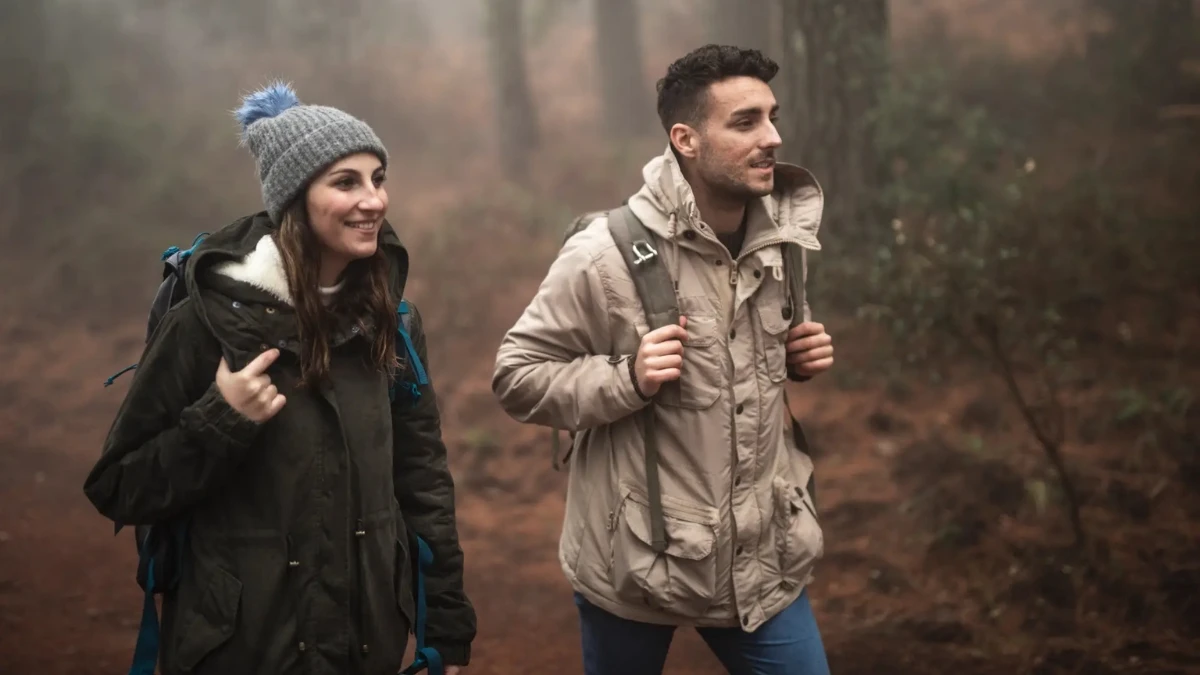Hiking in the rain can feel intimidating, but with the right preparation, it can also be one of the most rewarding outdoor experiences.
Rain brings out vibrant colors in the landscape, creates peaceful solitude on the trails, and adds a sense of adventure that sunny hikes can’t match. However, wet conditions also come with unique challenges—slippery paths, soggy gear, and a higher risk of blisters or chills.
That’s why knowing how to stay dry, comfortable, and safe is essential. In this guide, we’ll share 19 practical tips to help you embrace rainy-day hikes without getting soaked.
1. Essential Rain Gear for Hiking
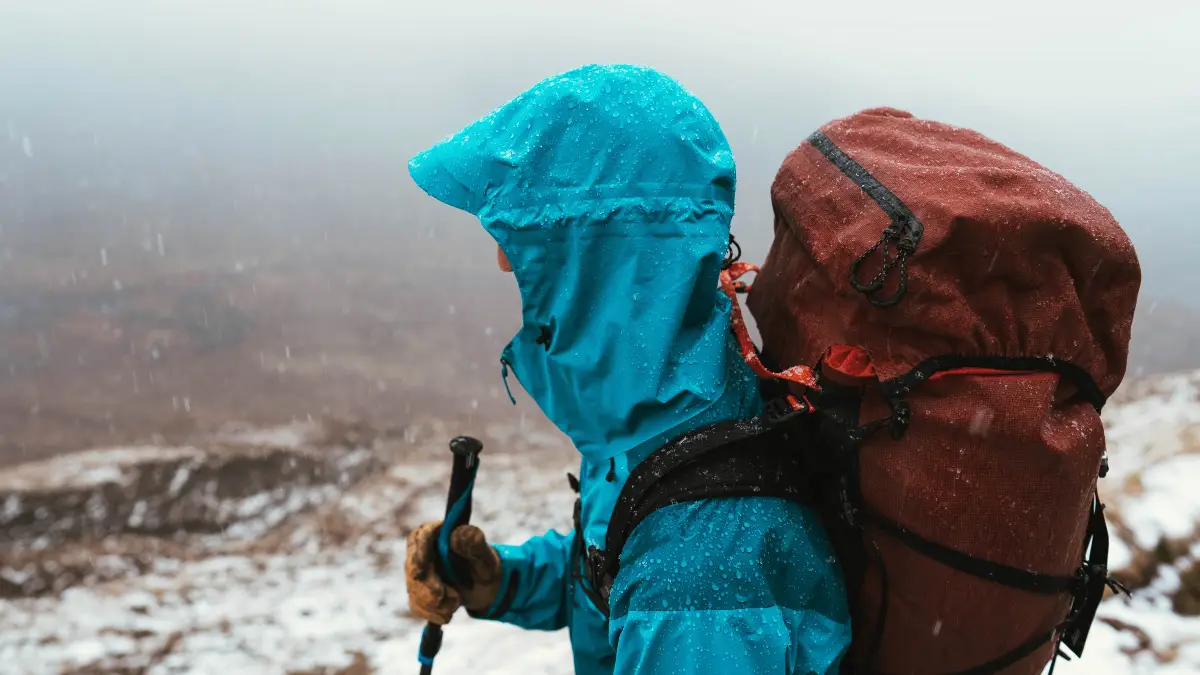
The number one rule for staying dry on the trail isn’t about avoiding the rain; it’s about being prepared for it. Your gear is your first line of defense. According to a 2024 survey, 45% of hikers say bad weather is the main reason they cancel a trip. With the right gear, you don’t have to be one of them.
Don’t just grab a single waterproof jacket and think you’re ready. A smart hiker uses a layered system. This means you have a base layer (like merino wool or synthetic fabric) to move sweat away from your skin, a mid-layer for warmth (like fleece), and a rain jacket as the outer shell. This system keeps you warm and dry from the inside out.
For your outer layer, you’ll need high-quality rain gear for hiking. Look for jackets and pants made with advanced fabric technology. Gore-Tex is a popular choice because it’s both waterproof and breathable. It has tiny holes that are too small for water drops to get in but large enough for water vapor (your sweat) to get out. eVent is another great option that works similarly.
The problem with cheap rain gear is that it might keep the rain out, but it traps your sweat in, leaving you wet and clammy from the inside. Breathability is just as important as waterproofing.
When it comes to your feet, waterproof hiking boots are a must. They protect your feet from puddles and mud. Pair them with wool or synthetic socks, not cotton, as cotton holds moisture and can lead to blisters.
To keep your lower legs and socks from getting soaked by wet plants and splashing mud, gaiters are a huge help. They are like a shield that wraps around the top of your boots and the bottom of your pants.
Finally, don’t forget the small but mighty accessories. A pack cover is a simple way to protect your bag, but an internal pack liner or a big trash bag works even better for keeping everything inside truly dry. These items are simple but make a massive difference in your comfort and safety.
2. Smart Packing & Preparation
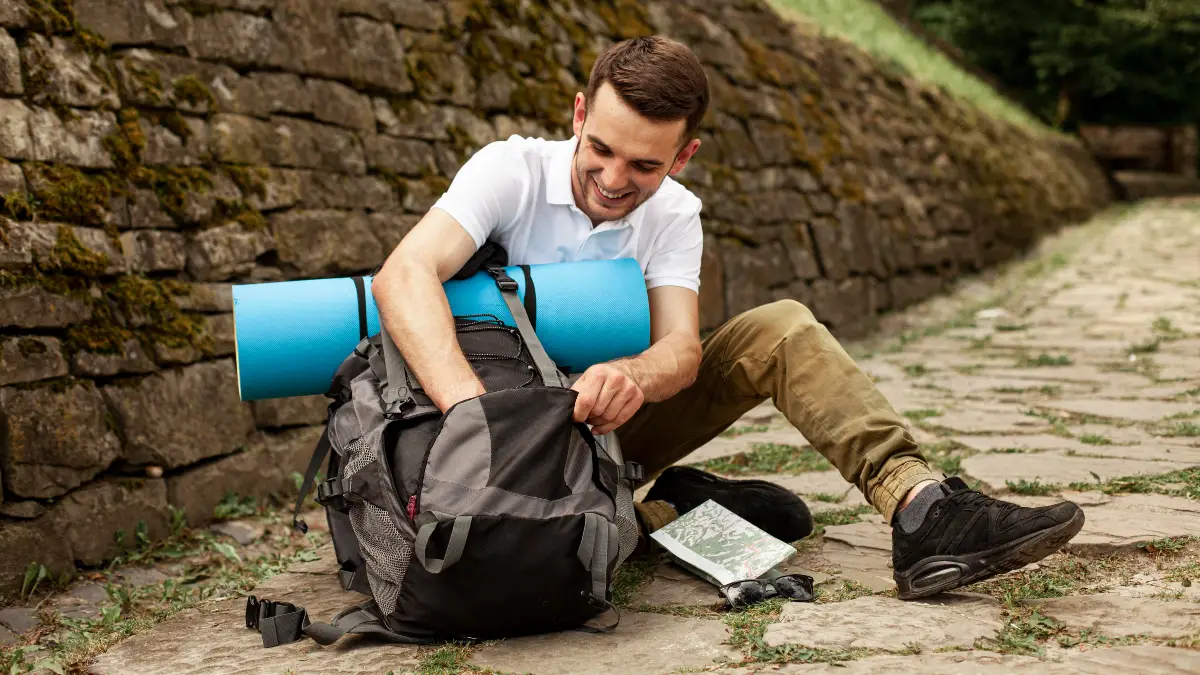
Once you have your rain gear for hiking on, the next step is protecting everything you carry. Nothing is worse than reaching for your phone or a fresh shirt only to find them soaking wet. This section is full of hiking in the rain tips for your pack.
The best way to protect your essentials is with the double-bag method. First, put your phone, wallet, and keys in a small, waterproof dry bag. Then, put that dry bag inside another waterproof bag.
A recent tech repair blog reports that water damage from outdoor activities is a leading cause of phone failure. Taking an extra step like this can save your phone and hundreds of dollars.
Besides your electronics, you’ll want a “dry kit.” This is a small bag with a fresh pair of socks, a dry shirt, and any important first-aid items. Having a warm, dry shirt to change into during a break can prevent you from getting too cold.
Before you even start your hike, you can improve your gear’s performance by pre-treating it with a Durable Water Repellent (DWR) spray. Over time, even the best waterproof jackets lose their ability to repel water.
The water will stop beading up on the fabric and will start to soak in, making the jacket feel heavy and less breathable. A DWR spray fixes this, helping your gear perform like new.
Lastly, you have a choice between a rain cover and a pack liner. A rain cover goes over the outside of your pack, protecting it from the top. A pack liner is a large, waterproof bag that goes inside your backpack before you put your gear in.
Rain cover is a quick fix, but a pack liner is a more reliable way to ensure everything inside your bag stays dry while hiking, no matter how hard it rains.
3. Staying Safe & Warm While Hiking in the Rain
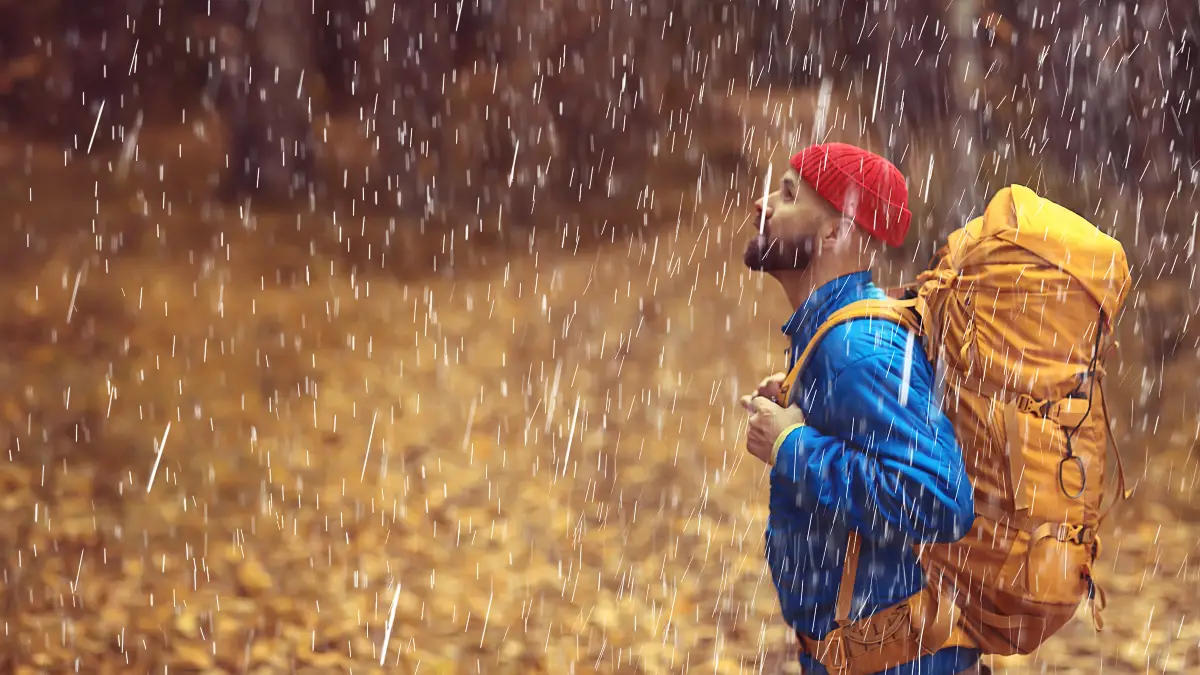
Once you’re geared up and on the trail, your focus shifts from what you packed to how you move. Rain changes the trail, and you have to change with it. These hiking in the rain tips are all about staying safe and warm when the weather turns.
The biggest danger on a cold, rainy day isn’t just getting wet—it’s getting cold enough to put your health at risk. This is called hypothermia. It happens when your body loses heat faster than it can make it. You don’t have to be in freezing temperatures for this to happen. Getting wet in mild weather can be enough to cause it.
You need to know the signs of hypothermia. They start small and get worse:
- Shivering: This is your body’s first response to make heat.
- Clumsiness or lack of coordination: Simple things like zipping up a jacket become hard.
- Confusion: You might not be thinking clearly or making good decisions.
- Slurred speech: Your words sound jumbled.
If you or a hiking partner shows these signs, you need to stop right away. Get them into dry clothes, give them warm food and drinks, and get them to a sheltered spot.
Rain makes everything slick. Rocks, roots, and wet leaves all become slip-and-slide hazards. You need to adjust your pace and be more careful with each step. A good pair of hiking boots with great grip is important, but so is your mindset. Take smaller steps and test each foot placement, especially when going downhill. Remember that a fast pace might get you to the end of the trail quicker, but a slip or fall can end your hike completely.
River and stream crossings also get tricky. What was a small, easy-to-cross creek in the morning can become a fast, swollen river after a few hours of rain. Don’t take a chance. If the water is moving fast and is above your knees, it’s too dangerous to cross. Flash flood risks are real and can happen fast.
According to the National Park Service, a significant number of search-and-rescue operations start because hikers were hurt or got lost due to unexpected weather. It’s smarter to turn back or find a safer path than to risk getting swept away.
Finally, protect your hands and feet. Cold hands make it hard to do anything, from holding a trekking pole to opening a snack. Waterproof gloves are a good idea. Your feet also take a beating.
When your feet are wet for a long time, the risk of blisters goes way up. The best way to prevent them is to use wool socks and change them out for a dry pair if you can. A little preventative care with moleskin or duct tape on hot spots can save you a lot of pain.
4. Bundle a communication gadget
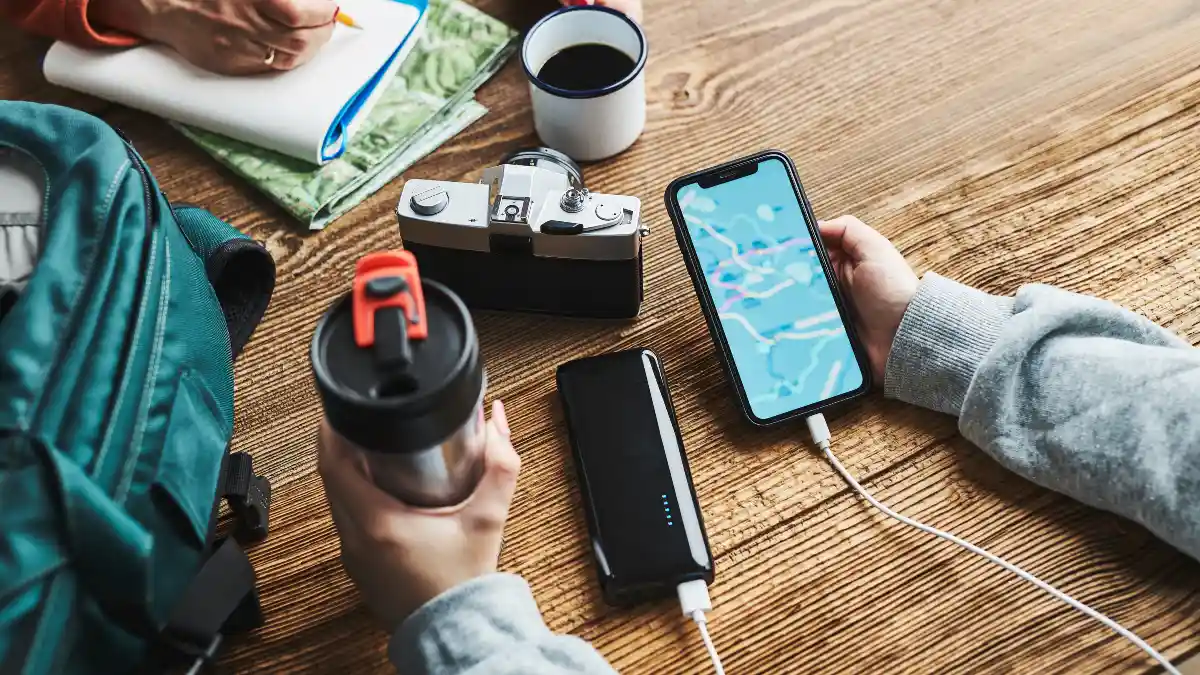
If you’re heading into remote areas, a satellite communicator can be a smart backup to your phone. Devices such as the Garmin inReach Mini 2 or similar GPS messengers let you send two-way texts, share your live location, and trigger an SOS signal if things go wrong.
Unlike cell service, which can disappear in the backcountry, these gadgets connect through satellites, giving you a reliable lifeline.
For convenience, clip your device somewhere accessible—like your pack’s shoulder strap or hip belt—so you can reach it quickly in an emergency. Most models are also water-resistant, meaning they’ll keep working even if the weather turns against you.
5. Cross Creek and Stream with Caution
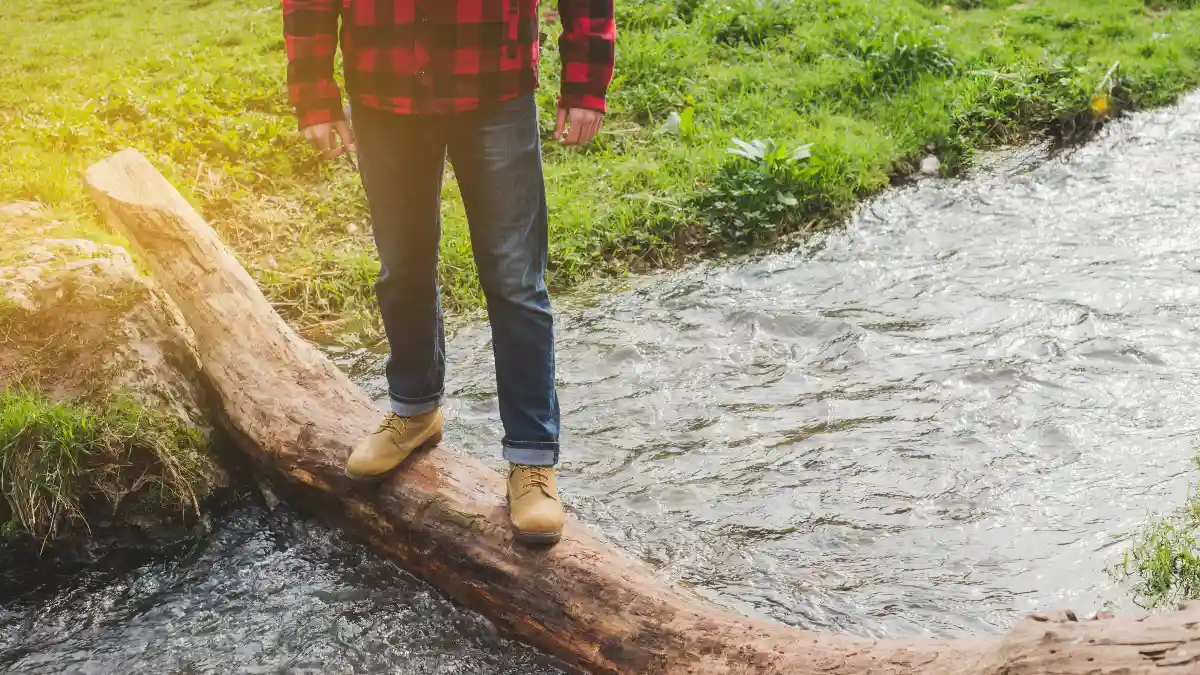
Rain makes stream crossings more challenging, so move carefully and deliberately. Smaller gravel or packed earth usually offers steadier footing than slick boulders, which can turn treacherous when wet.
A smart precaution is to unclip your backpack straps before stepping in. If you slip, you’ll be able to shed the pack quickly instead of being dragged down by its weight.
When wading across, angle your body slightly toward the current, keep your stance wide, and pause to plant each foot securely before shifting forward. Trekking poles come in handy here—they double as depth checkers and give you an extra point of balance against the push of the water.
6. Wear a Tough Rainproof Jacket
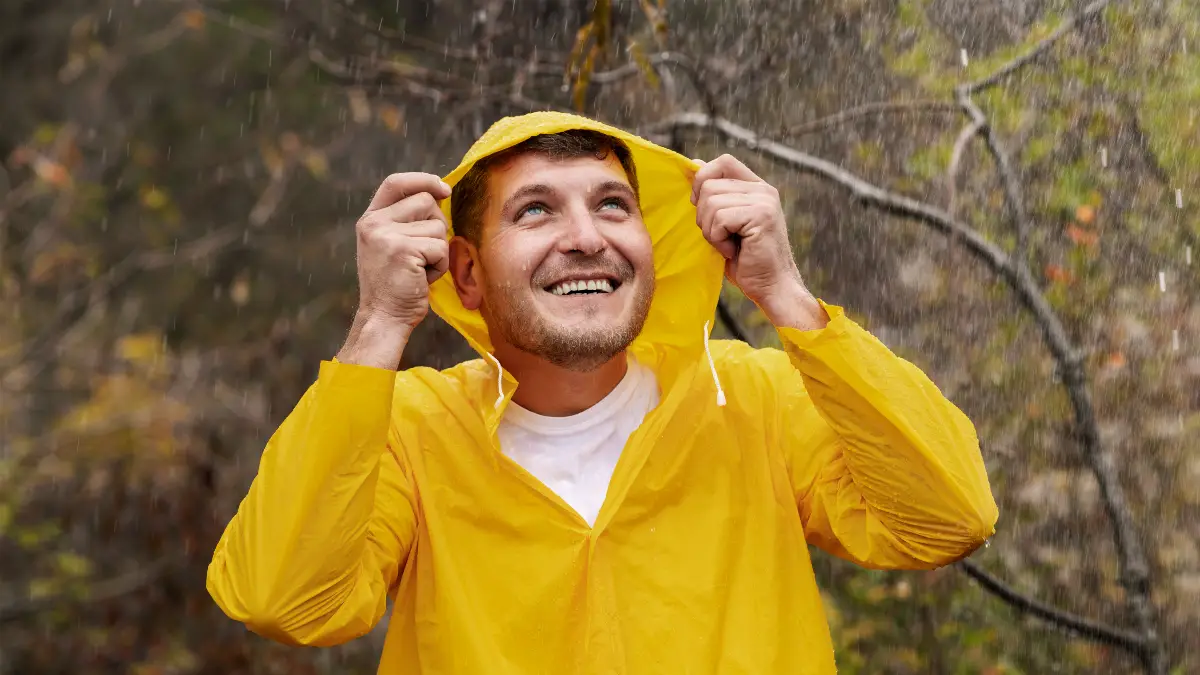
reliable rain jacket can make the difference between dreading wet weather and actually enjoying the trail. Look for a fully waterproof shell not just water-resistant with a hood that cinches down to keep rain from sneaking in.
Since most waterproof fabrics don’t breathe well, features like underarm zippers or side vents are worth having. They help release heat and sweat so you stay dry from the inside as well as the outside.
Fit matters, too. Choose a jacket roomy enough to layer over a fleece or base layer, especially if you’ll be hiking in cooler climates.
For an affordable yet trail-ready option, jackets like the REI Co-op Rainier stand out. They’re lightweight, packable, and include essentials like taped seams, a water-repellent finish, and venting zippers. If you’re heading into consistently rainy or alpine conditions, investing in a higher-end piece such as the Arc’teryx Beta SL can pay off with durability, performance, and long-term comfort.
7. Keep Towels and Extra Clothing in Your Car
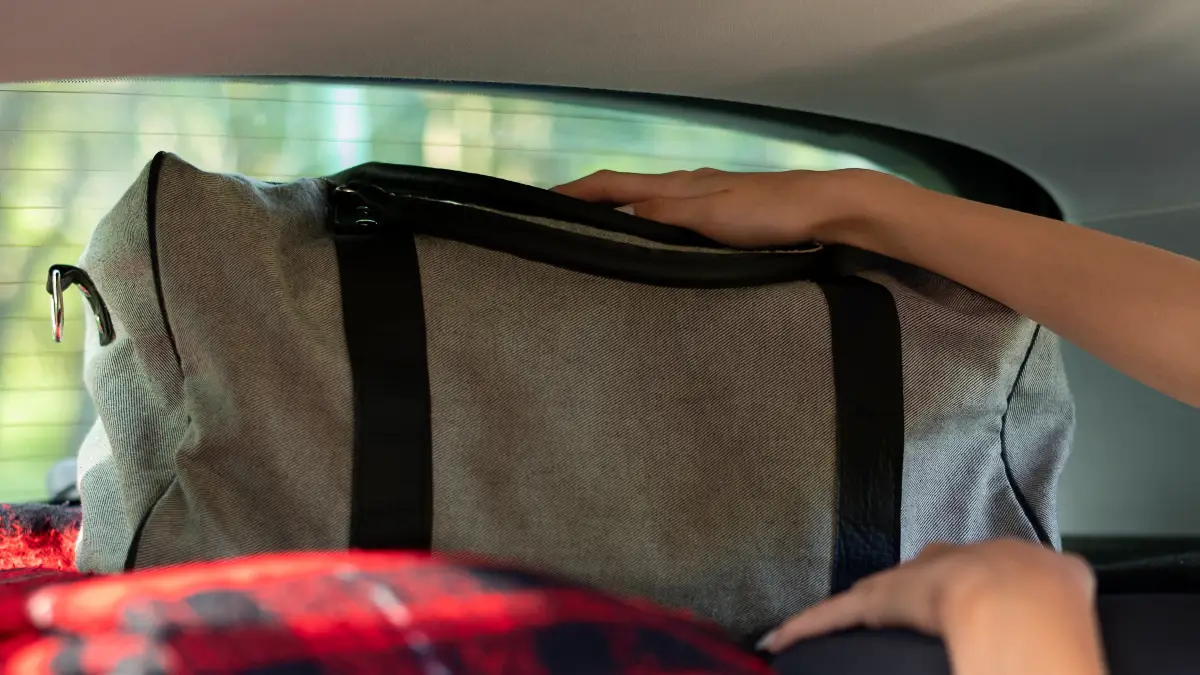
After a soggy hike, nothing feels better than changing into dry clothes and having a towel on hand. A quick-dry microfiber towel is especially useful—it packs small, dries fast, and gives you a way to warm up after being out in the rain.
If you hike with pets, bringing a towel is doubly smart. A quick wipe-down keeps muddy paws from turning your car into a mess on the drive home.
8. Choose Items With Proper Air Circulation
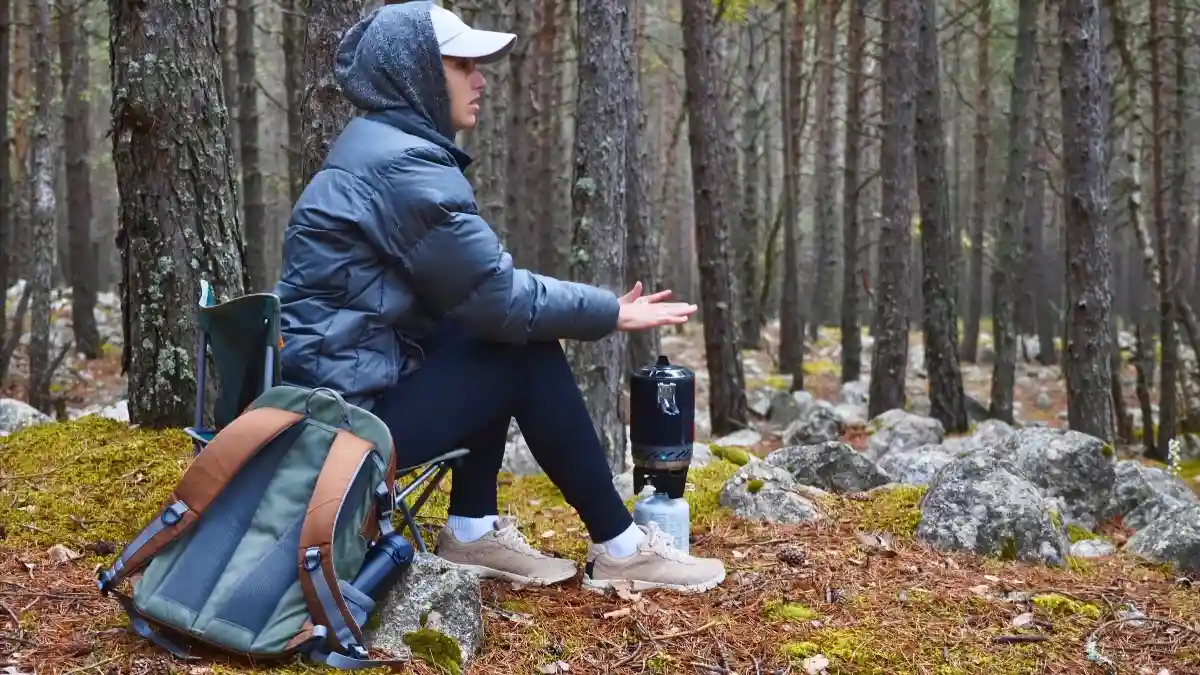
One drawback of waterproof gear is that it can trap heat and sweat. To avoid overheating, choose jackets or pants with built-in ventilation options like underarm zippers, thigh vents, or mesh-lined openings.
These features don’t stand out at first glance, but they make a huge difference by letting fresh air circulate and keeping you more comfortable on the move.
9. Skip Cotton And Down Items

When you’re hiking in the rain, avoid cotton and down—once soaked, they hold onto water, become heavy, and stop keeping you warm. Instead, opt for synthetic fabrics or merino wool, which dry quickly, insulate even when damp, and pull moisture away from your skin.
A good base layer is key. Lightweight, long-sleeve performance shirts made from quick-drying blends are ideal under a rain shell. They keep you comfortable, manage sweat, and help regulate your body temperature during wet-weather hikes.
10. Wear Socks Made of Wool

No matter the season, wool socks are one of the best choices for hikers. In wet conditions, they outperform cotton by keeping your feet warmer, managing moisture, and reducing the risk of blisters.
Brands like Darn Tough have built a reputation for durability and comfort. Their socks are snug without being tight, offer targeted cushioning, and are backed by a lifetime guarantee—making them a favorite among thru-hikers and weekend trekkers alike.
11. Wear a Hat With a Wide Brim
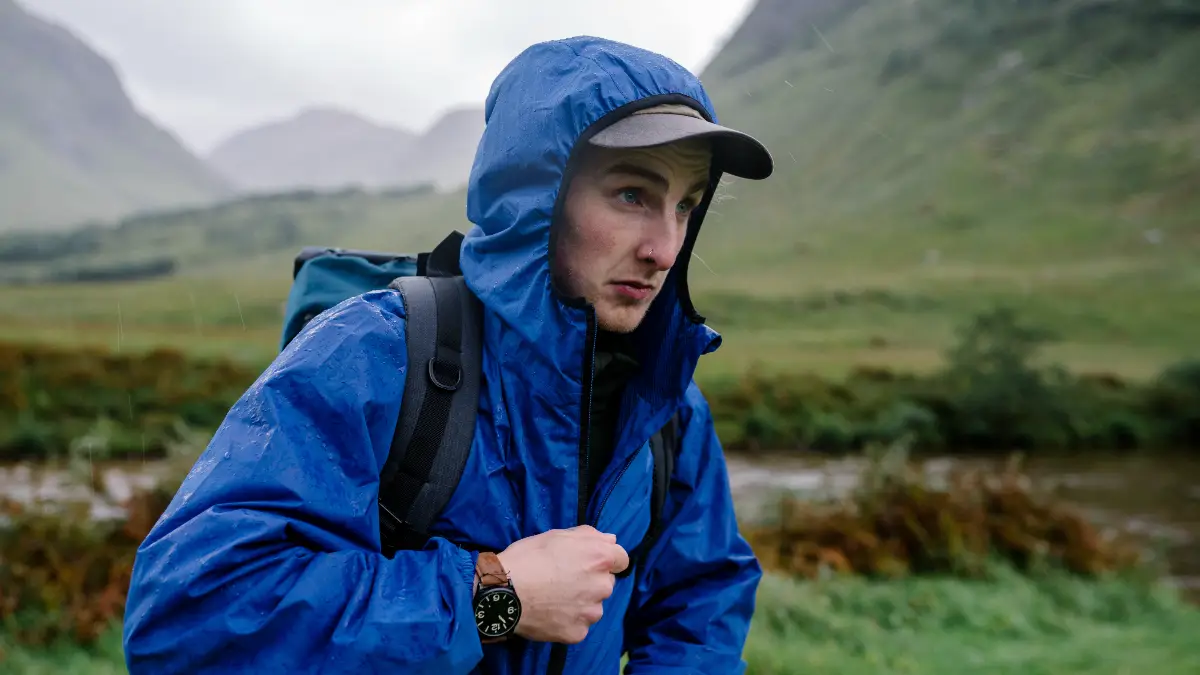
Simple cap with a brim can make rainy hikes more comfortable by shielding your eyes and face from dripping water. Lightweight hiking caps or trucker hats fit easily under a rain jacket hood, giving you an extra layer of protection without adding bulk.
12. Wear Hiking Pants That Are Waterproof
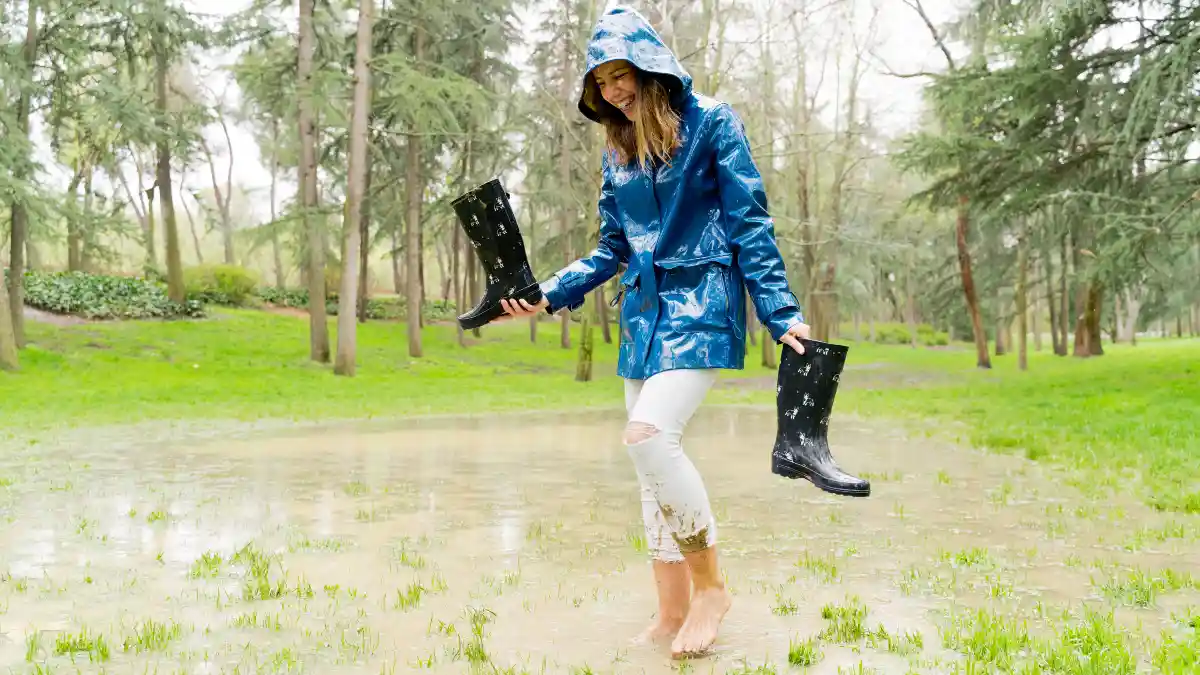
Packing a pair of waterproof hiking pants is a smart move for wet-weather trails. Look for styles that are lightweight, breathable, and feature ankle zippers—so you can slide them on or off without removing your boots.
Wearing thin leggings or lightweight hiking pants underneath adds versatility, letting you peel off the outer shell when the skies clear. While some hikers skip rain pants altogether, on a truly soggy day they can save you from uncomfortable rubbing and chafing.
13. Utilize Walking Sticks
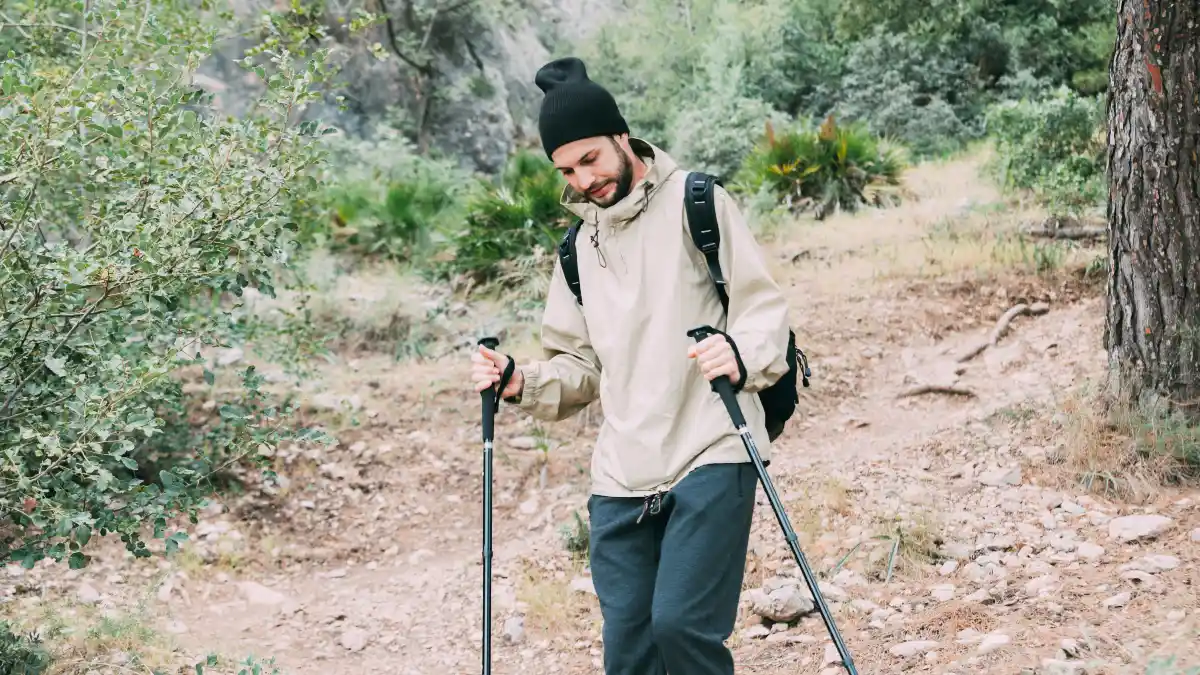
Trekking poles can make a big difference on rainy hikes. They give you extra stability on slick terrain, whether you’re navigating wet roots, slippery rocks, or muddy sections of trail. Poles also come in handy for testing water depth before stepping into puddles or streams, helping you avoid unexpected soakers.
If you don’t already own a set, consider investing in a lightweight, adjustable pair—they’re useful year-round and especially valuable when the ground is slick and unpredictable.
14. Wear Waterproof Trekking Shoes
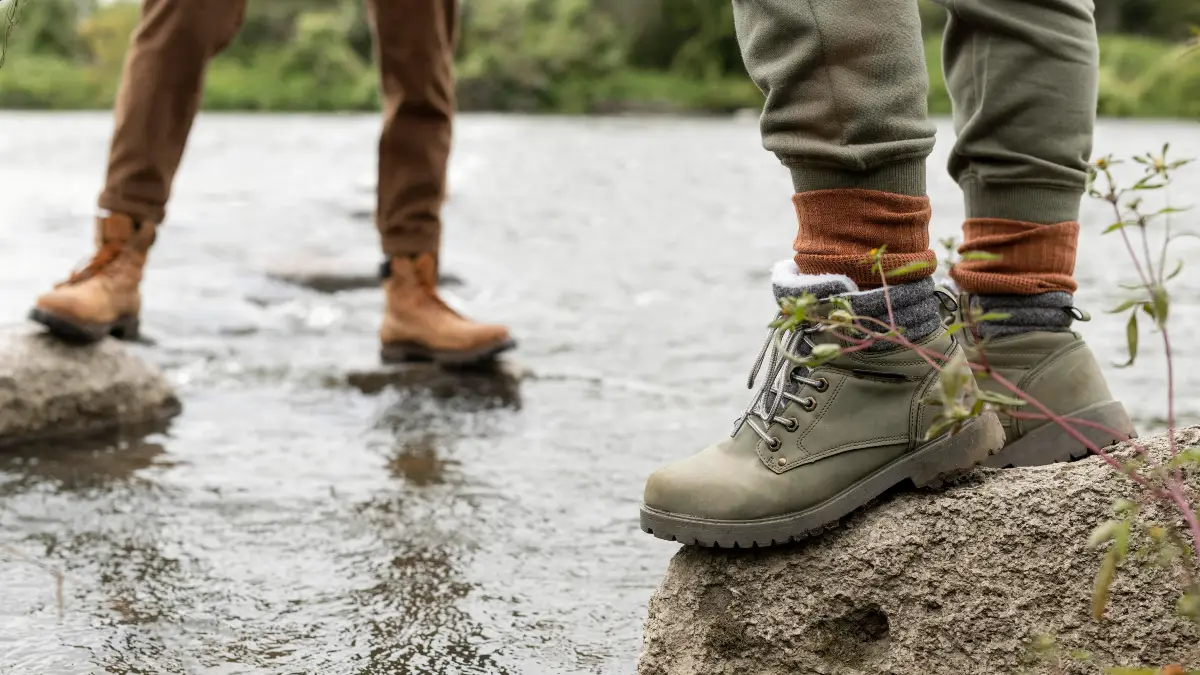
Few things kill the mood on a rainy hike faster than soaked feet. That’s why having reliable waterproof footwear is one of the most important pieces of gear you can bring.
For wet conditions, a mid- or high-cut boot is often the best choice—it offers extra ankle support on slick terrain and creates a better barrier against water compared to low-cut shoes.
If you already own hiking boots, you might not need to buy new ones. Many models are already waterproof, but it’s smart to inspect and re-treat them with a waterproofing spray or wax from time to time. Over months of use, the protective finish can wear down, reducing their ability to keep your feet dry.
15. Bring Neoprene Gloves
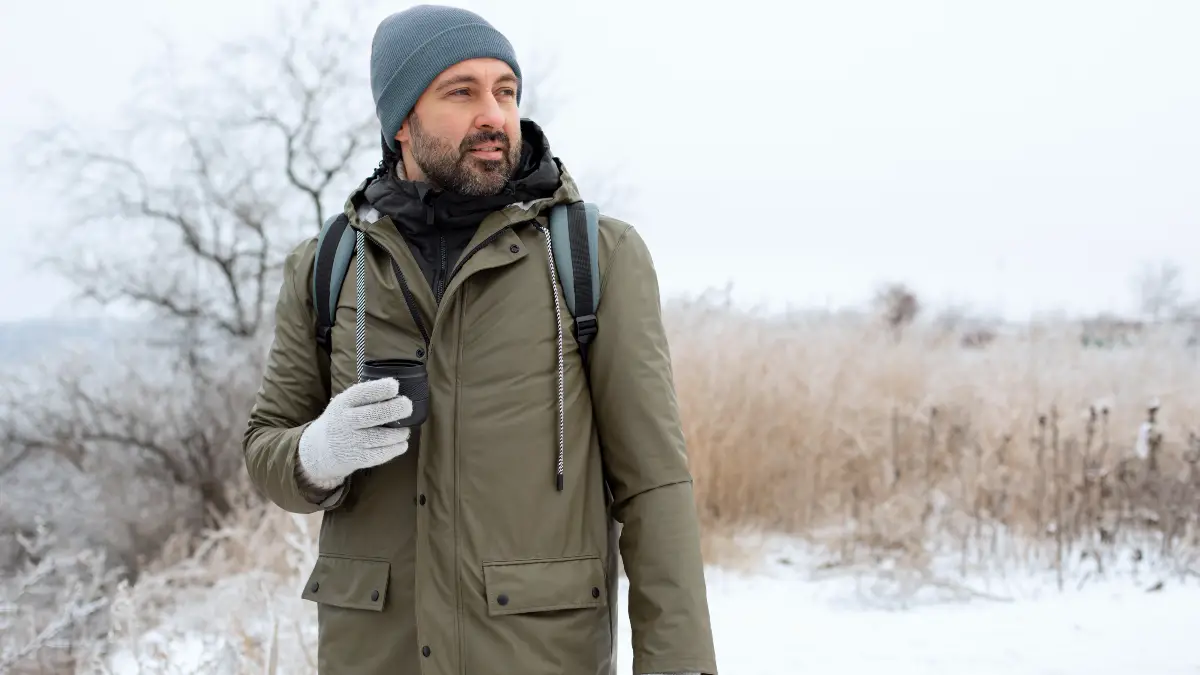
Cold, rainy weather can quickly numb your hands, making even simple tasks tough. One smart solution is to wear neoprene gloves. Unlike fleece or wool, neoprene is designed to trap warmth even when it’s wet similar to how a wetsuit works. Your hands may not stay perfectly dry, but they’ll stay warm and functional throughout the hike.
16. Use Hand Warmers
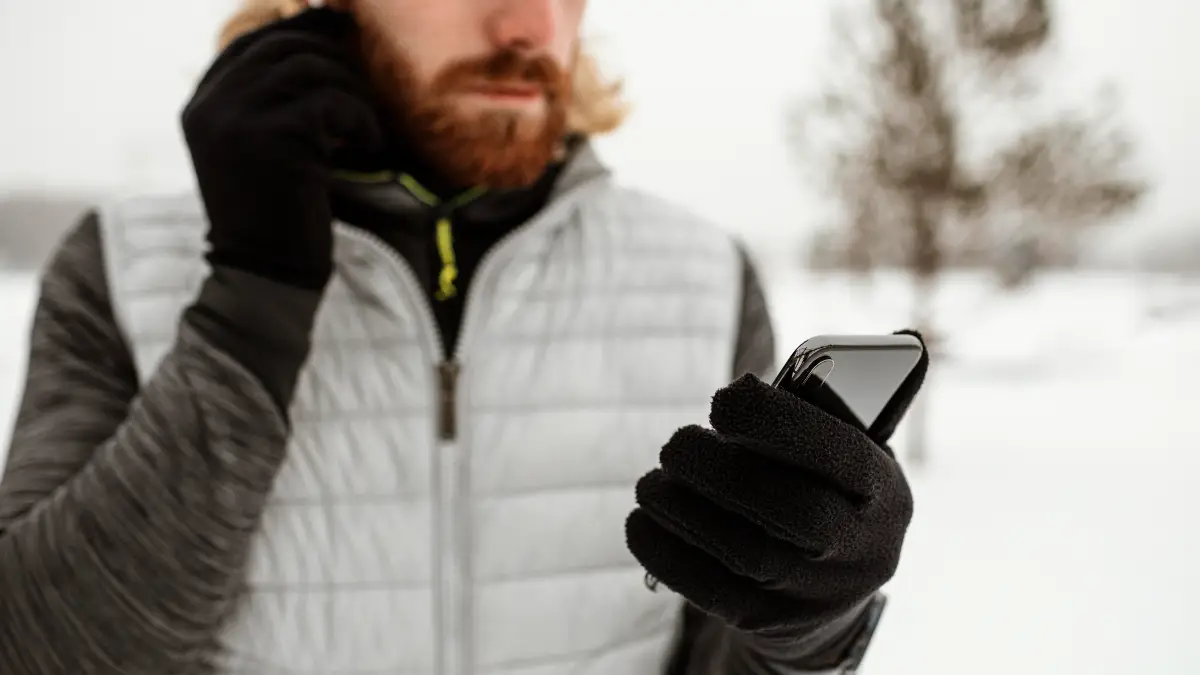
While they won’t keep moisture away, hand warmers are a simple way to bring back comfort when the chill sets in. Slip them into your gloves or stash them in your pockets, and they’ll give you a quick burst of heat that makes a damp, cold hike feel a lot more manageable.
17. Carry a Headlamp
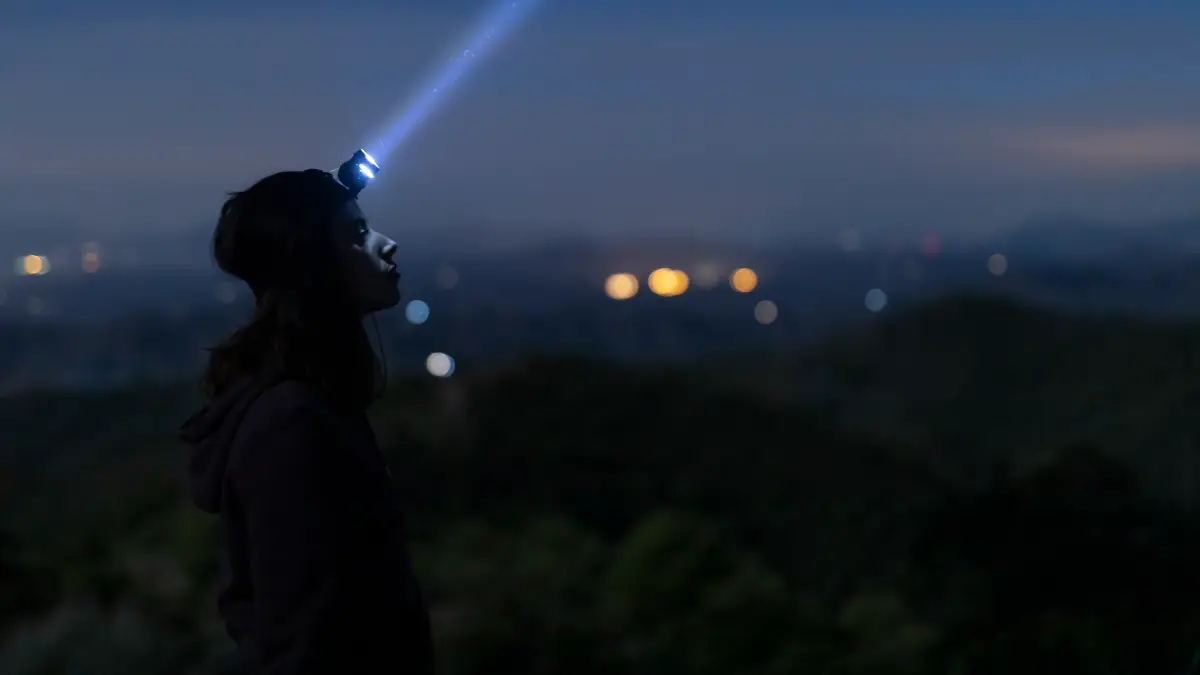
Cloud cover and rain can make the trail feel dim even during the day, so carrying a headlamp is a smart precaution. A reliable, water-resistant model ensures you can see clearly in low light, whether you’re caught in fog, navigating dense forest, or finishing later than expected.
A compact, waterproof headlamp also frees up your hands, making it easier to handle trekking poles or check your map. Cloud cover and rain can make the trail feel dim even during the day, so carrying a headlamp is a smart precaution.
Reliable, water-resistant model ensures you can see clearly in low light, whether you’re caught in fog, navigating dense forest, or finishing later than expected. A compact, waterproof headlamp also frees up your hands, making it easier to handle trekking poles or check your map.
18. Pack a First-Aid Kit
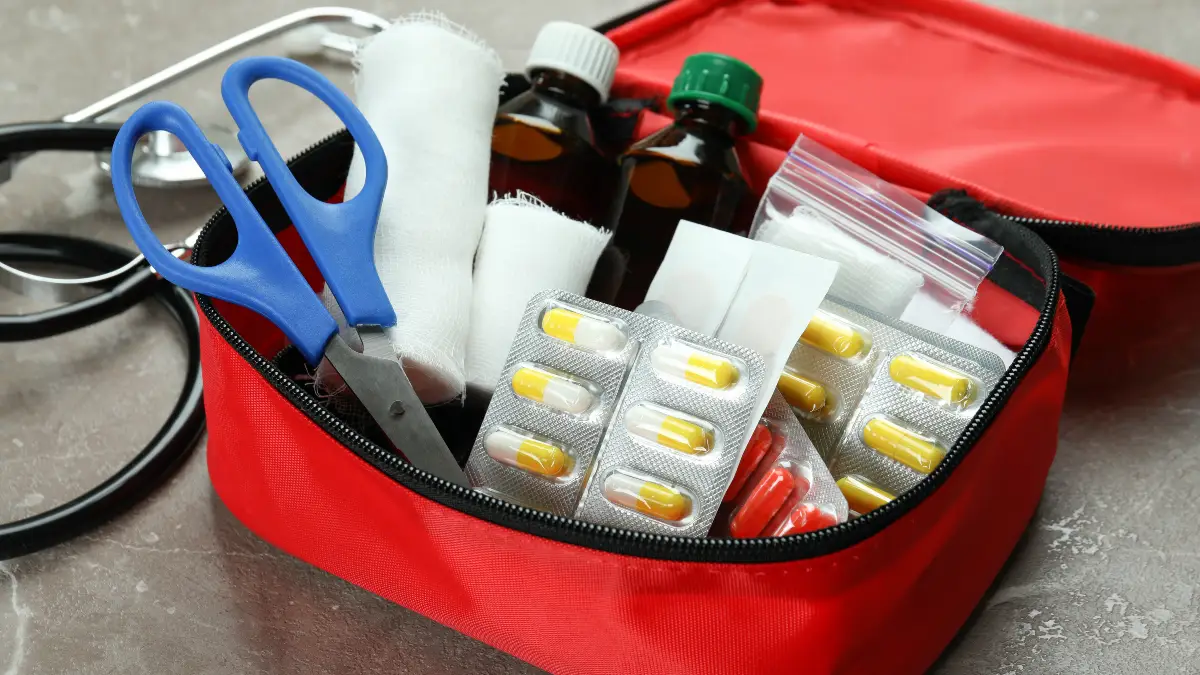
Slippery trails and reduced visibility mean minor mishaps are more common when hiking in the rain. That’s why it’s smart to carry a compact, weatherproof first aid kit. Make sure the supplies are sealed in a waterproof pouch or dry bag so that bandages, gauze, and medical tape stay usable.
Even a small kit designed for day hikes can make a big difference if you need to patch up a cut or blister before it worsens.
19. Stay Calm and Composed
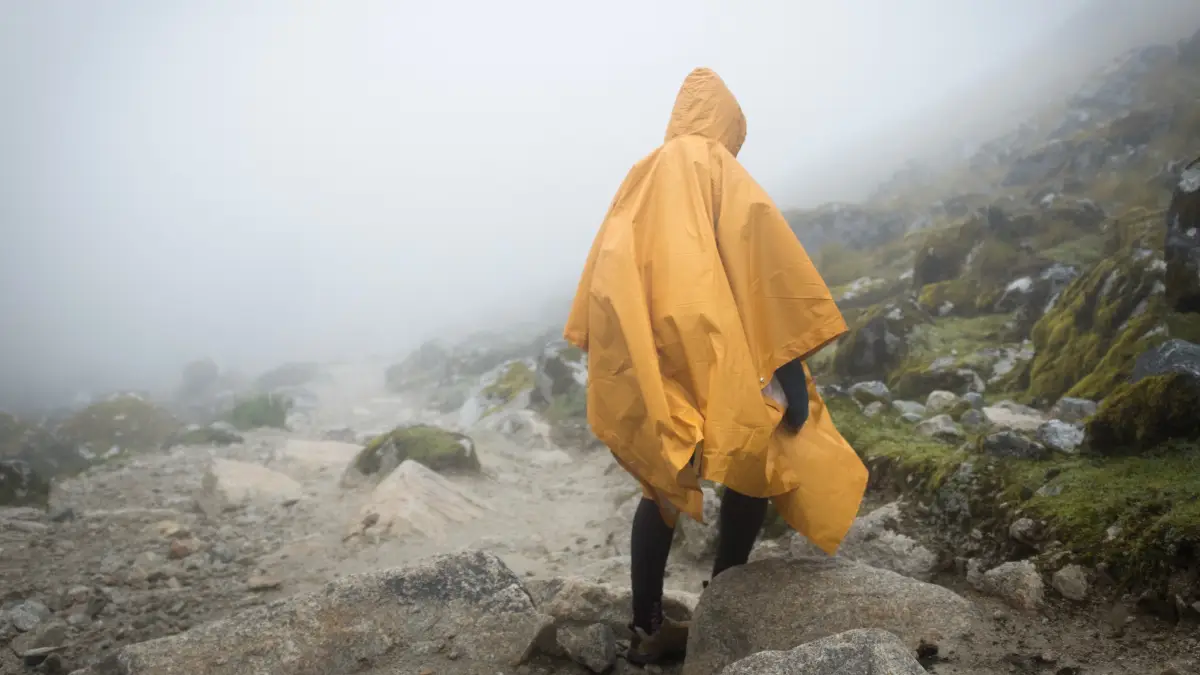
I’ve learned that rain can either ruin a hike or make it unforgettable—it all depends on how you approach it. On one trip in the Pacific Northwest, I almost canceled because of a gloomy forecast. In the end, I went anyway, and the quiet trails, fresh pine scent, and mist rolling over the mountains turned out to be the highlight of my trip.
Sure, hiking in the rain can feel inconvenient at first, but it also brings a sense of solitude and a beauty you just don’t get on sunny days.
If you’re prepared with the right gear and an open mindset, the drizzle becomes part of the adventure instead of an obstacle. Next time the skies look gray, lace up your boots and head out—you might discover the trail in a whole new light.

